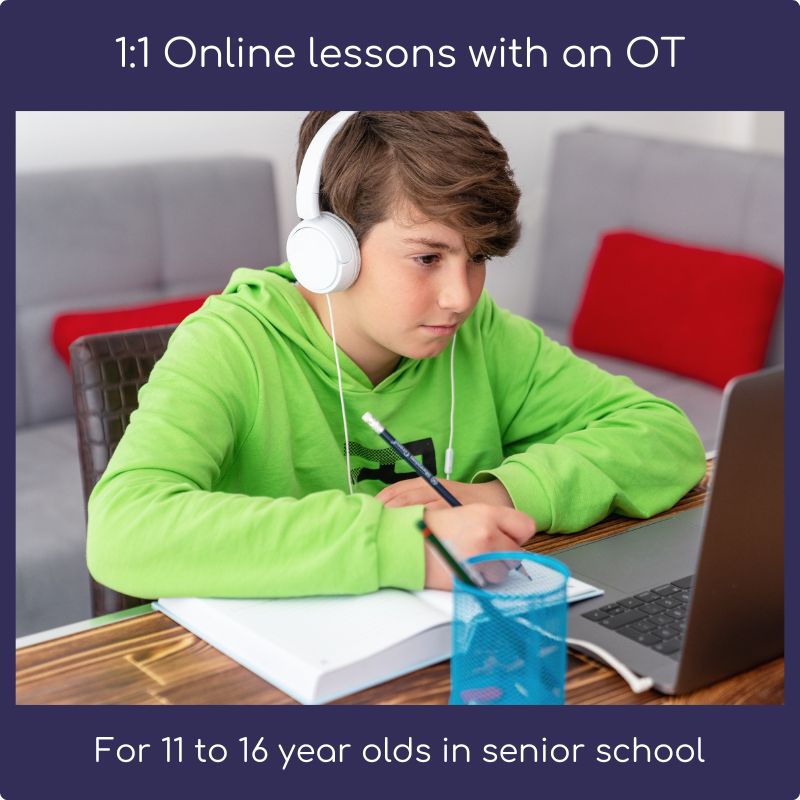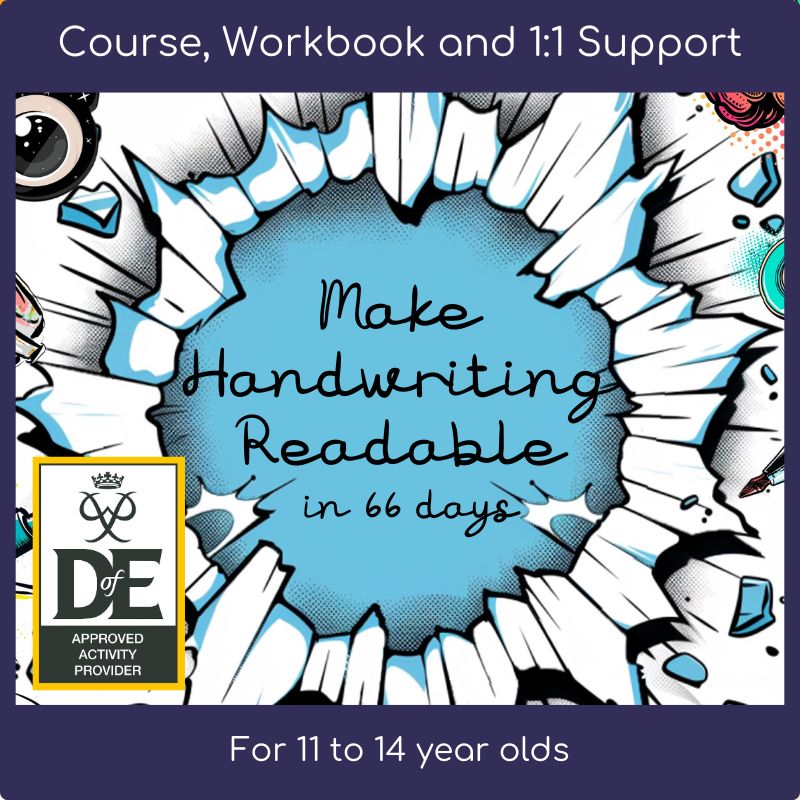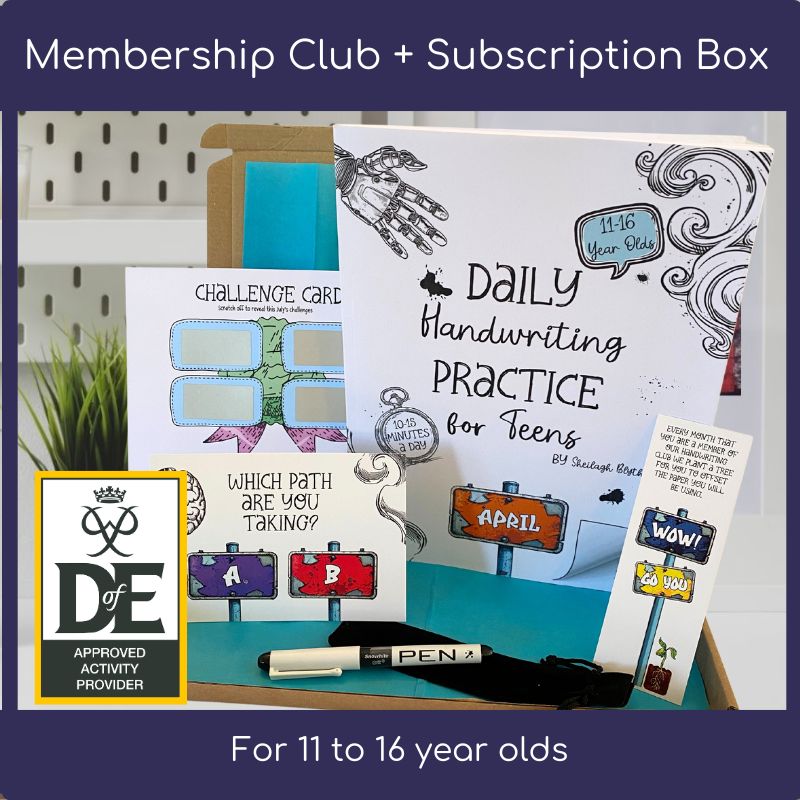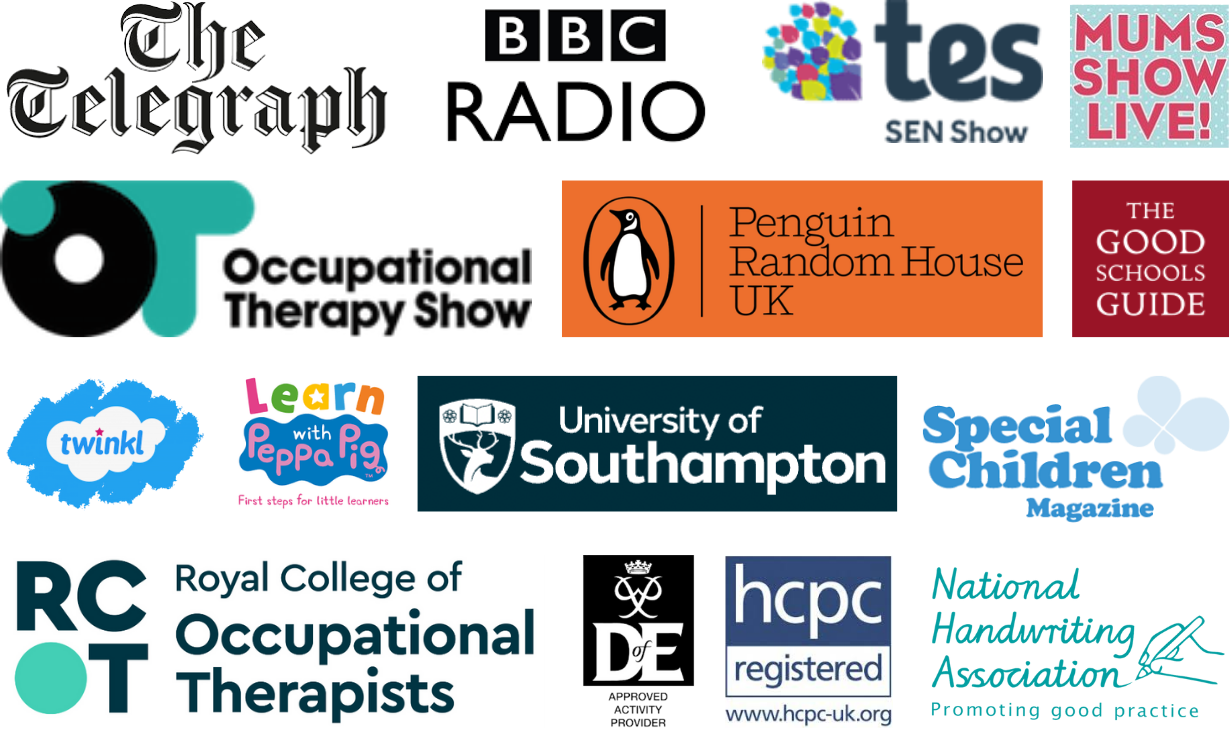Explore handwriting practice for teenagers: A guide to expert tips, fun exercises, and proven techniques.

Age 11
Writing will be constantly neat and legible. Has one handwriting style
Age 12-13
Handwriting is more mature, able to write at a fast pace


Age 14
Handwriting has matured. work is presented well.
Age 15-16
Able to complete exams in the timeframe. Everyone can read and mark their work

Why handwriting practice for teenagers matters
Handwriting practice matters, whatever age you are. There is a myth that you can’t improve handwriting after the age of 12. This is incorrect.
Handwriting is a physical skill. It can always be improved. We often have to undo “bad” habits and create new ones. The neural pathways from our brains to our fingers can always develop. Muscle memory can be improved. The difference is that learning a new skill sometimes takes us longer as we get older. It’s not impossible. At this age, many students fear having to change how they write. They think it’ll slow them down. The key is to work with their current writing style.
It’s also important to recognise that handwriting is a life skill. Nowadays, it isn’t natural to write for an hour and a half or two hours in one go. We’re out of practice at this. School lessons now use more technology than ever. As a result, our handwriting will become less readable. This happens when we write for a long time. And our hands may also ache.
What a teacher is expecting to see
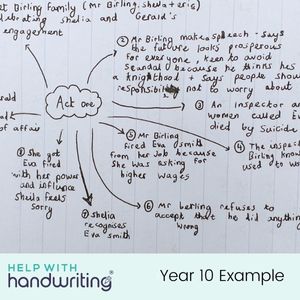
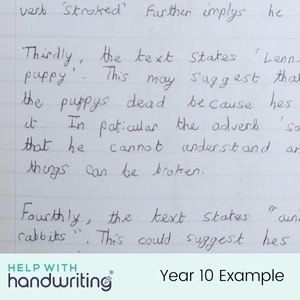
We have the following handwriting examples given to us by some lovely teachers. They show the standards they expect. These are images from an “average” student and not the “best in class” student. They will be expecting increased legibility, consistency and quality. By Year 6, all this is expected whilst writing at speed.
What to expect at this age in more detail
By the age of 11, your child’s handwriting will be more refined. The writing will be constantly neat and legible. All letters and numbers will be accurately formed. They’ll have precision with letters and grammar. Your child will be able to write in joined up/cursive style. But some might prefer to revert to the printed style. They’ll be able to write faster whilst keeping the quality. An important skill in secondary school. The presentation and the neatness of their work will be good. And they will be able to write longer pieces of work. Take notes and write essays. Teachers will have no difficulties reading it.
By the age of 12, your child’s writing will be constantly neat and legible. They will have mastered all parts of handwriting. This includes spacing, size, shape, and proportion. They’ll be able to write quickly, keep it legible and on the line. They’ll be able to handle complex writing tasks such as essays.
By age 13, your child’s handwriting is more mature. It may start to reflect their personality. It will be less like a child’s writing. They’ll be writing at a fast pace. They will have confidence in themselves and their writing.
By 14, your child’s handwriting will have matured. They may use different writing styles to express themselves. For instance, using capitals for subheadings. Or different coloured pens. They’ll be able to write with logic and clarity, able to express their views with ease.
By 15 to 16 years old, your child will be automatically writing neatly and clearly. Their work will be well presented. It will be organised and usually appealing to the eye to look at. They’ll be able to finish complex writing tasks on time. And, they’ll be writing with accuracy. Confidence in how they write and express subject knowledge will be evident. They will be able to complete exams in the timeframe needed. Everyone can read and mark their work.
What support your child might get for handwriting at school?
Secondary schools do not offer set handwriting lessons. The curriculum is fast-paced. It doesn’t usually allow for handwriting practice. If practice is needed, it is squeezed into the school day. Few handwriting schemes are designed for students of this age. So, the resources used may be better for younger children. General writing advice is usually offered.
Expand Your Handwriting Know-how: 4 Must-Read Guides for Parents

Hi, I'm Sheilagh, the founder of
Help with Handwriting and I'm here to help your child.
I get it. You’ve spent what seems like years asking your child and teachers to improve their handwriting.
Your child is finally in agreement to work on it. But nothing is the right age for them. It all seems pitched for younger kids. You don’t want to waste this opportunity.
This is a now or never time.
That’s where we can help. We know how to engage your child. Helping them believe they can improve for good. Working with their current writing style. Giving them the skills needed for school and life.
There are 3 ways your child can improve their writing:
lessons, online courses or our club
Here’s what we think would be the most suitable for you.


Wanting to try something at home first?
Here are 3 ideas that you can try at home. These are things we do when helping students this age to help keep handwriting practice meaningful and fun.
How does it work?
Answer questions such as “Who would win in a fight between a hippo and a rhino?”Or “Could we build a Doctor Who-like TARDIS?”. The goal when writing is to focus on readability and looks.
Do you think internet addiction is a real disease?
Give us your opinion. Set a timer. Practice answering debate-style questions. Do it in 2, 3, or 5 minutes. This helps you write faster. It also helps you structure your thoughts.
Know the keywords
It’s important to write keywords clearly. They should be specific to the subject. This helps the marker understand your child’s work. We’re not suggesting writing a list of them that would be boring. Answering KS3 and GCSE questions using these words is best.

Frequently asked questions about handwriting and teenagers
There is no set age. You’ve probably had a niggle for a while. Teachers may be starting to say your child needs better handwriting. If handwriting speed or legibility is being affected then we’d say now is the time to be concerned. The key consideration is whether your child wishes or is ready to work on it.
This is tricky. We all know convincing a tween or teen to do something they do not want to do is very difficult. We can advise you to tell them the benefits of having good handwriting for their grades. How writing is important for life after school. Or suggest you give them real-world examples where neat handwriting is valued. You’ve probably tried this. Any handwriting practice for teenagers must improve their writing and confidence. It should encourage them to try. Once they see the real changes, they’ll want to improve their writing. You won’t need to motivate them.
Handwriting is a complex skill. We often forget its details. There is no one area that is always a problem. Working on letter size can really help legibility. It’s not a good approach to try to improve writing speed when the formation isn’t there yet.
Unfortunately, yes. Teachers are often good at guessing handwriting. This is because they have taught a lesson to your child. They know the topic inside and out. They have an advantage over an examiner. They expect to see the topic words in the writing. Exam board markers do not have this inside knowledge. They mark a lot of scripts in a short amount of time. The exam boards admit that poor writing can lower grades.
The advice for this is the same regardless of your child’s age. Handwriting practice for teenagers should be 5 to 10 minutes a day. The best way to improve handwriting is to practice often. It will help create new writing habits. Transforming these habits into muscle memory.
Yes, any handwriting practice for teenagers must suit your child’s age. We know these are difficult to find, which is why we created our own. Activities must engage them and teach the right techniques. One tip, avoid buying books with lined handwriting paper. The lines are too big and are for younger writers. If your child needs special lined paper, we can provide this for them.
No, it is never too late. As mentioned above, the brain is always learning and adapting. As we get older, it can take us longer to learn new skills. It is all possible. What matters is how set people’s handwriting habits are. This is why choosing the right handwriting practice for teenagers is so important.
Another key point about handwriting practice for teenagers is the style of writing. In our experience, many Year 7 students no longer wish to write in the cursive style. This is the writing style with a lead-in stroke. It can be helpful to write joined up as it has a slight increase in speed. We prefer readable writing. It’s better than trying to use cursive to save a nanosecond.
The length of time to practice does not differ. Yet, the techniques do. For instance, the angle of the paper and pen choice matter. Also, how some numbers and letters are formed can make a big difference.
Be the first to know: Weekly expert tips and insider insights


Join our Thursday newsletter for:
Expert handwriting tips
Behind-the-scenes insights
Latest handwriting research
New blog post alerts
Exclusive discounts on our courses
Please tick which age group is most relevant.
Thank you!
You have successfully signed up and a newsletter will be on its way to you shortly.
We promise we will respect your details and we will not spam you with rubbish content.
- Copyright
- 2025
- Help With Handwriting
- All Rights Reserved · Registered in England and Wales (Company Number 13759964) | Site Design by
- Laine Sutherland Designs


